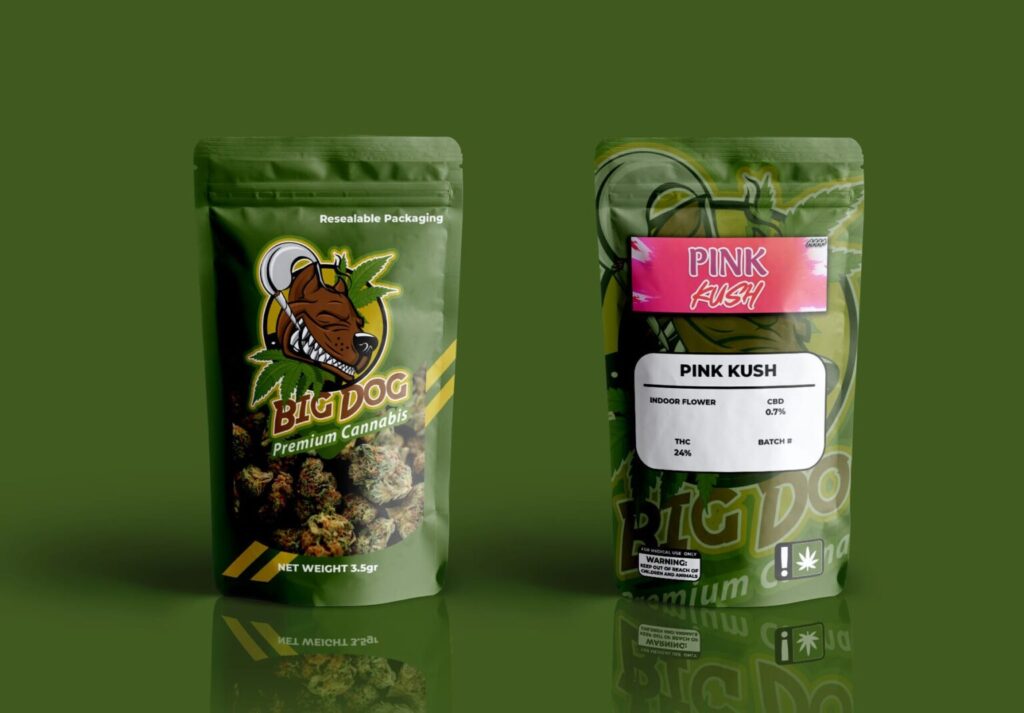In the ever-evolving world of food packaging, the demand for solutions that ensure freshness, enhance shelf life, and offer visual appeal is continuously rising. Among the myriad options available, custom printed Mylar bags have emerged as a front-runner for their robustness and versatility. This article explores why these bags are an optimal choice for food packaging and how they compare with other material
Why Choose Mylar Bags for Food Packaging?
Mylar, a brand name for biaxially-oriented polyethylene terephthalate (BOPET), is a polyester film made from stretched polyethylene terephthalate (PET). It is favored in the food packaging industry for several compelling reasons:
Durability and Protection
Mylar bags are exceptionally durable and puncture-resistant, which is crucial for protecting food products during transportation and storage. They are also impermeable to gases and moisture, which helps in preserving the freshness and extending the shelf life of food products.
Customizable and Brand-Friendly
One of the significant advantages of using custom printed mylar bags is the ease of customization. These bags can be printed with vibrant graphics, logos, and nutritional information, enhancing brand visibility and consumer appeal at the point of sale.
Cost-Effectiveness
Compared to other packaging materials like glass or metal, Mylar is lightweight, which reduces shipping costs. Its ease of production and material cost also make it a cost-effective option for businesses.
Comparing Mylar with Other Food Packaging Materials
While Mylar bags offer numerous benefits, it’s important to compare them with other packaging materials to understand their relative advantages.
Glass Packaging
Glass is a classic choice that offers excellent barrier properties and is 100% recyclable. However, it is heavier, more fragile, and typically more expensive than Mylar. The weight of glass increases transportation costs and its fragility requires additional protective packaging.
Aluminum Foil and Cans
Aluminum is widely recognized for its excellent barrier properties, which make it highly effective at protecting contents from moisture, air, and light. This characteristic is essential for preserving the quality and extending the shelf life of many food products. Additionally, aluminum is fully recyclable, which adds an environmental benefit by reducing waste and encouraging sustainable practices in packaging.
However, despite these advantages, aluminum does have some drawbacks when compared to alternatives like Mylar. One significant limitation is the cost; aluminum can be more expensive due to the raw materials and processing required. This can make it a less economical choice for businesses looking to manage packaging costs effectively.
Furthermore, aluminum is not as versatile when it comes to printing. While Mylar bags can easily be customized with a wide range of colors and detailed designs, aluminum surfaces can be more challenging to print on. This limitation can affect the visual appeal of the packaging, which is crucial for marketing and brand recognition.
Plastic Containers
Other plastics such as polyethylene terephthalate (PET) and high-density polyethylene (HDPE) are frequently chosen for food packaging due to their versatility and cost-effectiveness. These materials are widely appreciated for their ability to be molded into various shapes and forms, which makes them suitable for a broad range of packaging needs. Additionally, the relatively low production cost of PET and HDPE makes them economically attractive options for manufacturers looking to reduce expenses.
However, despite these advantages, PET and HDPE plastics tend to have less effective barrier properties when compared to Mylar. This means they are not as proficient at blocking out moisture, air, and other environmental factors that can degrade food quality. As a result, food products packaged in these materials might experience a faster rate of spoilage, leading to shorter shelf lives. This can impact not only the freshness and taste of the food but also the economic efficiency due to increased waste and the potential need for more frequent replacements.
FAQs About Mylar Bags for Food Packaging
Q1: Are Mylar bags safe for all types of food?
A1: Yes, Mylar bags are safe for packaging a wide range of food products. They are FDA approved for food contact and do not leach chemicals into the food.
Q2: Can Mylar bags be reused or recycled?
A2: Mylar bags can be reused if cleaned properly. However, recycling facilities for Mylar can vary by region, so it’s important to check local recycling guidelines.
Q3: How do Mylar bags help in extending the shelf life of products?
A3: Mylar bags block out light, moisture, and air—three primary culprits in the degradation of food. By preventing exposure to these elements, Mylar bags significantly extend the shelf life.
Q4: What types of food are best suited for Mylar bag packaging?
A4: Dry goods such as coffee, tea, nuts, and snacks are ideal for Mylar bags. The barrier properties are perfect for maintaining the crispness and freshness of dry items.
Conclusion
Custom printed Mylar bags are an exemplary choice for food packaging, offering a blend of durability, cost-effectiveness, and branding potential. Their superiority in preserving food quality and extending shelf life, along with their customizable nature, makes them a preferred option for many businesses. As consumer preferences continue to evolve towards more sustainable and efficient packaging solutions, Mylar bags are likely to remain a key player in the packaging industry.




More Stories
Close to Home: Lifeguard Recertification
Syna World: Where Streetwear Meets Music
Discover the Art of Shopping at Broken Planet Market!